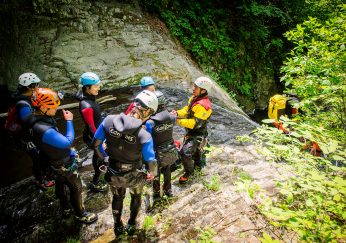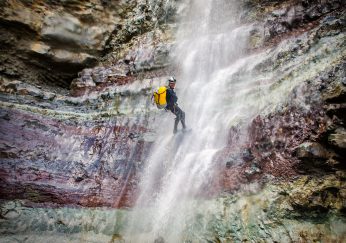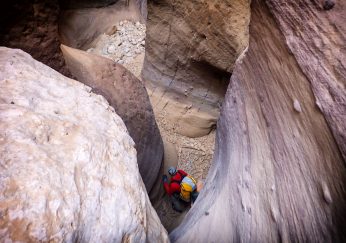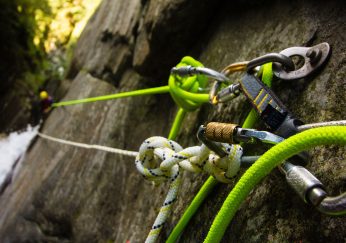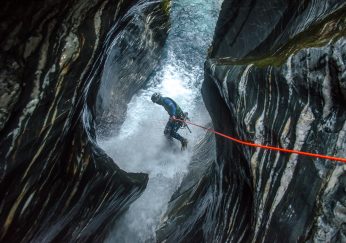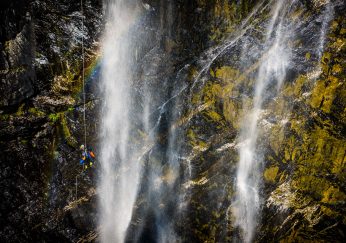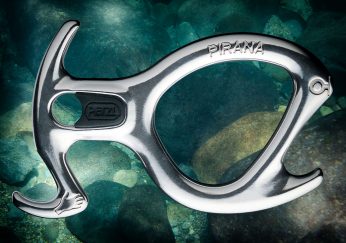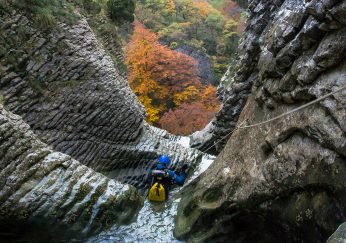I am making my way to the Swiss Alps for canyoning there quite late, you will say. In November. Why so late, you may ask? It’s because of the way the canyons fill and empty themselves, with the help of glaciers. And because they melt in the summer time, those canyons are full of water at that time. That is why we visit them, when the temperatures at 2500 m are below 0°C for some consecutive days. At the same time, the water must not freeze, because then you get problems with the ice. That is why the period for such canyoning is very short, only a few days in the whole year. And then it’s up to oneself to take the chance or leave it, till the next window of opportunity arises again next year.
And this year I took the opportunity and visited the real Alps. The first day, we visited the canyon Sandbach, beneath the might North Face of Eiger. That is the wall, which caused 6 deaths, before a team of German-Austrian climbers conquered it in 1938. One of the most unsuccessful climbs ever was even captured in a move called North Face in 2008. And we had those exact scenes before our eyes, very vividly remembering the harsh struggles that took place there, when we visited the exact place and climbed into the canyon, where we found some leftover backpacks and a pair of boots captured in the ice. Believe me, nobody threw away those things on purpose. What exactly happened up there, we can only guess in the end and let our fantasy do the rest.
Somewhat strange, that we canyoneers consider ourselves happy at the fact, that glaciers are melting. With the melting of the ice, there emerge new and uncharted paths of the canyon, where no man’s foot ever walked on before. And in Sandback, we encountered just that. The ice around the humongous cliffs has melted and has given us access to the deep snowy bottom. After a 50m descend, we arrived in a dark foothold, where we had to light up our flashlights. “Welcome to the dark, harsh world, where nobody survives without proper equipment.” The cold chilled us to the bones, and the water gave us the last push too, constantly freezing our feet as we walked through it. And the hands were in no better state. I couldn’t wait to put on my neoprene gloves, which I left in my backpack, hanging on the climbing rope, but after 30min of waiting the team made it safe down too, where I waited for them at the second waterfall.
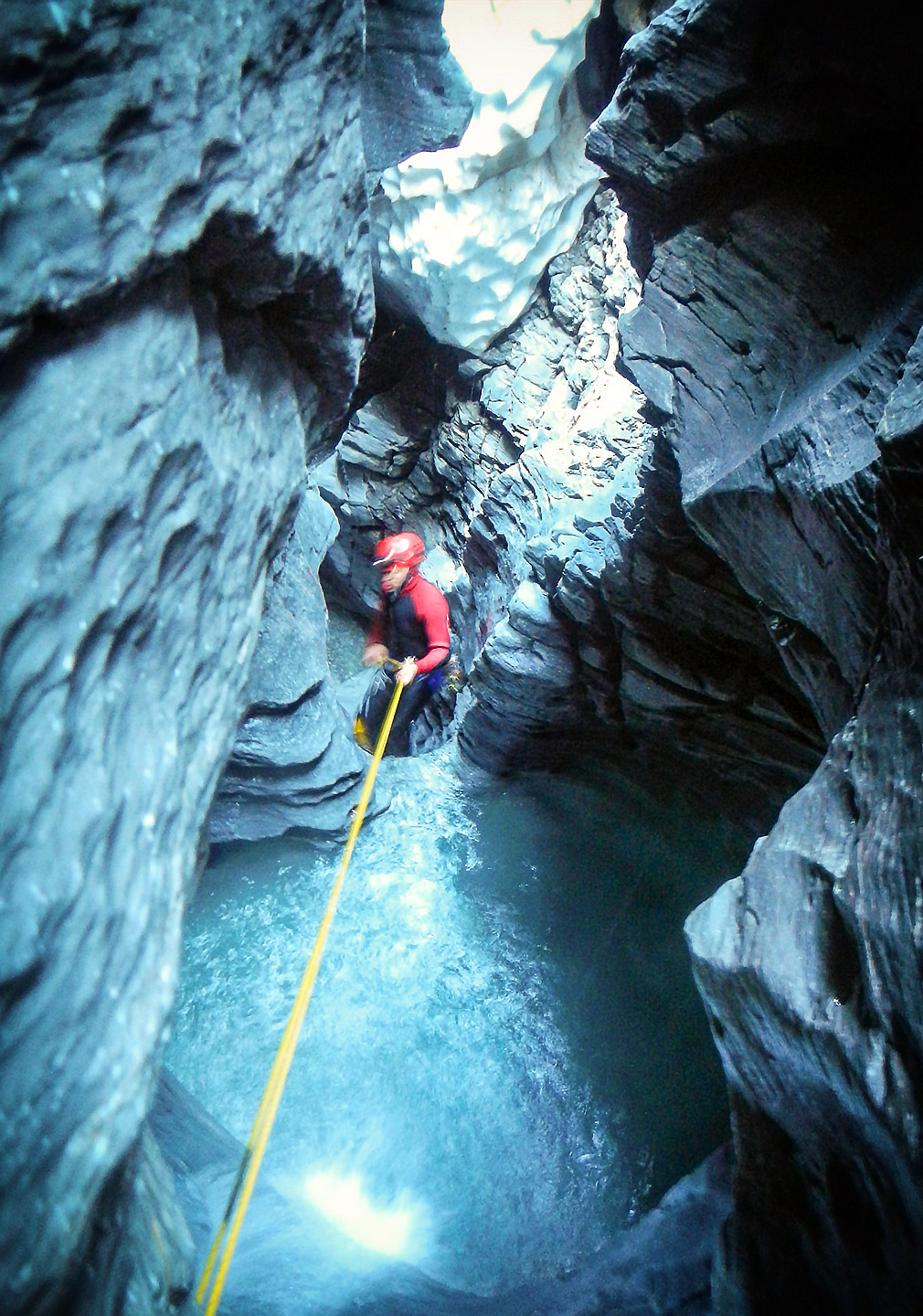
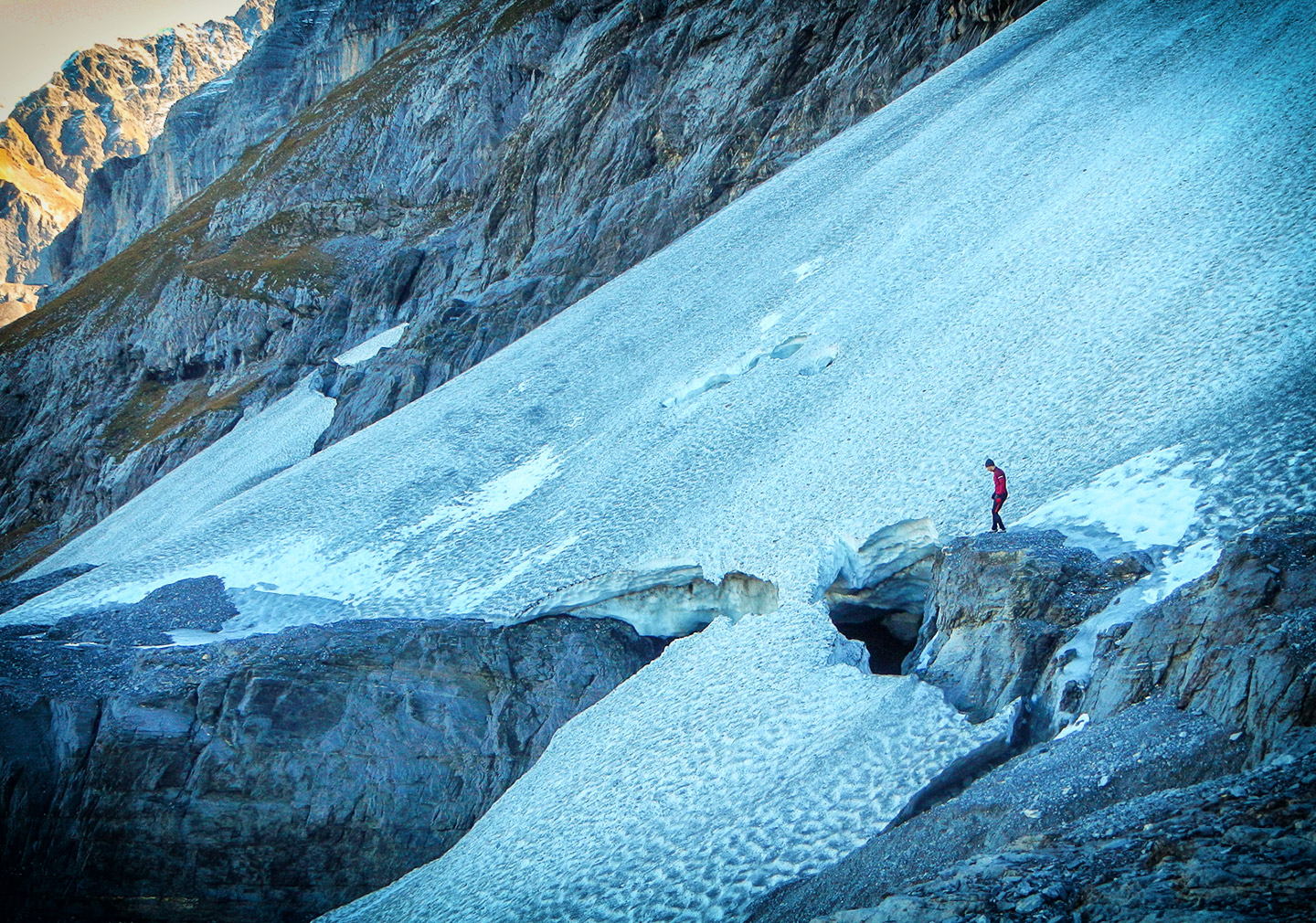
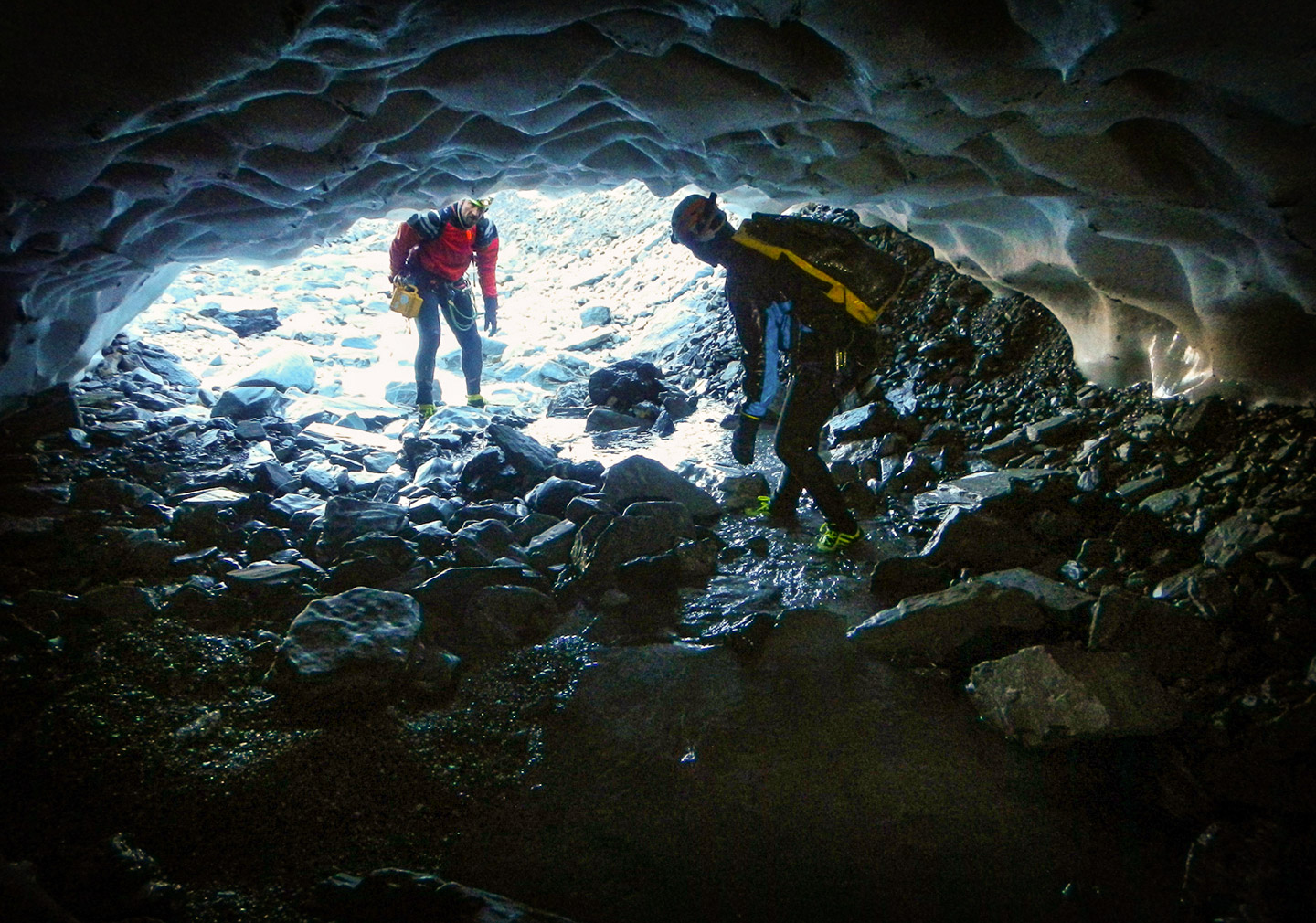
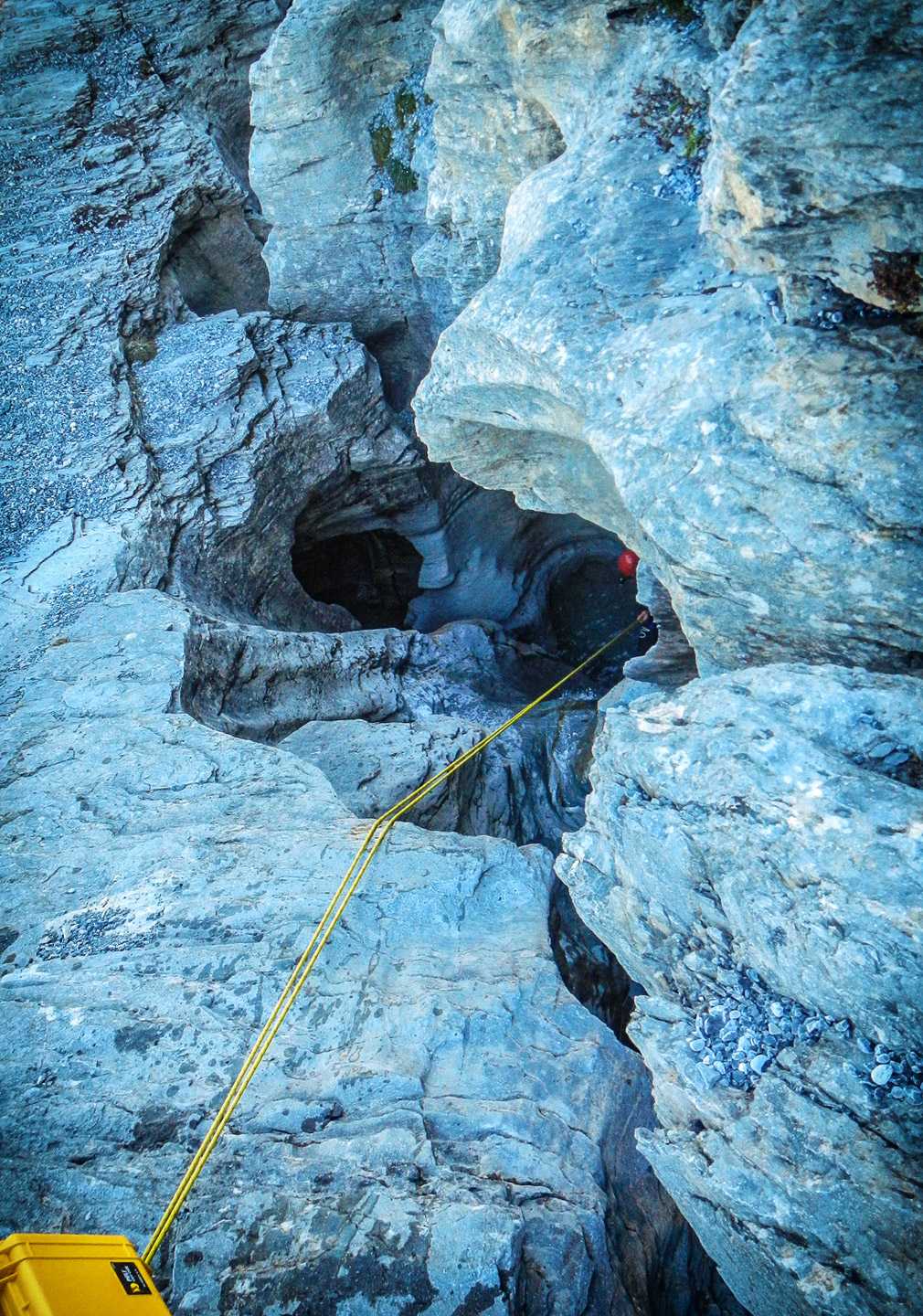
I finally managed to put on my gloves and the world was, all of a sudden, a much better place. The impenetrable rock leaves its traces here. The canyon is deeply, deeply connected with the mountain. On the surface of Eiger we can only see a small crack, where it is somewhere even up to 50m deep. That is Sandbach. And even if the sun was high above the sky that day, the upper part of the canyon would still be pitch dark, because it is covered in ice. “There we go, couple of days in cave-like canyons”, I said to myself a bit disappointed. I much rather like canyons, where the light shines in. But I still got used to it after some time and I started to think, how long and how much amount of water had to pour though this crack, that this kind of formation developed itself. I walked though sections, which are up to 100m long and are not wider than 40cm, sections you cannot even turn around in. The backpack caused quite some trouble when walking too, because I got stuck with it quite sometimes along the way. With backpacks it’s always the problem or whether they are too big or too small. And when it comes to it, I rather have the latter, although it is always too heavy in the end.
Well, about 2 hours into the walk and abseiling down on ropes in this “refrigerator” finally lead us to sunlight. Beneath the icy arch was light. The canyon opened up to us and we had a beautiful view of the village Grindelwald in front of us. In the valley I can see the train, which is heading to Jungfrau. That is the highest railway in the world, which took a long 16 years to build. Today, for about 170 € it takes you up to the 3.454 m high Jungfrau, with a stunning views from the top. And if your finances are good, it’s a must-see when you visit Switzerland. I caught myself dreaming about riding the railway. But we have to hurry; there is no time for philosophy. I hope that the lower part of the canyon is going to take us less time and that we will be able to get the last train to the valley. After another 1,5 hours of walking and 6 hours of canyoning we still have quite a way back to get to. I shot some more blurry pictures and off we go again. I have to say that the lower part of the canyon is quite nicer than the upper. We have sunlight, which brings a certain feeling of warmth with it. And I am really happy about the light, because then I can make some more photographs of my equipment, which is everything else than professional. And we canoed. We made ourselves anchor points for descends, taking turns doing this and trying to avoid swimming in the deeper ends of the water. There are no opportunities for jumps or slides along this way anyhow.

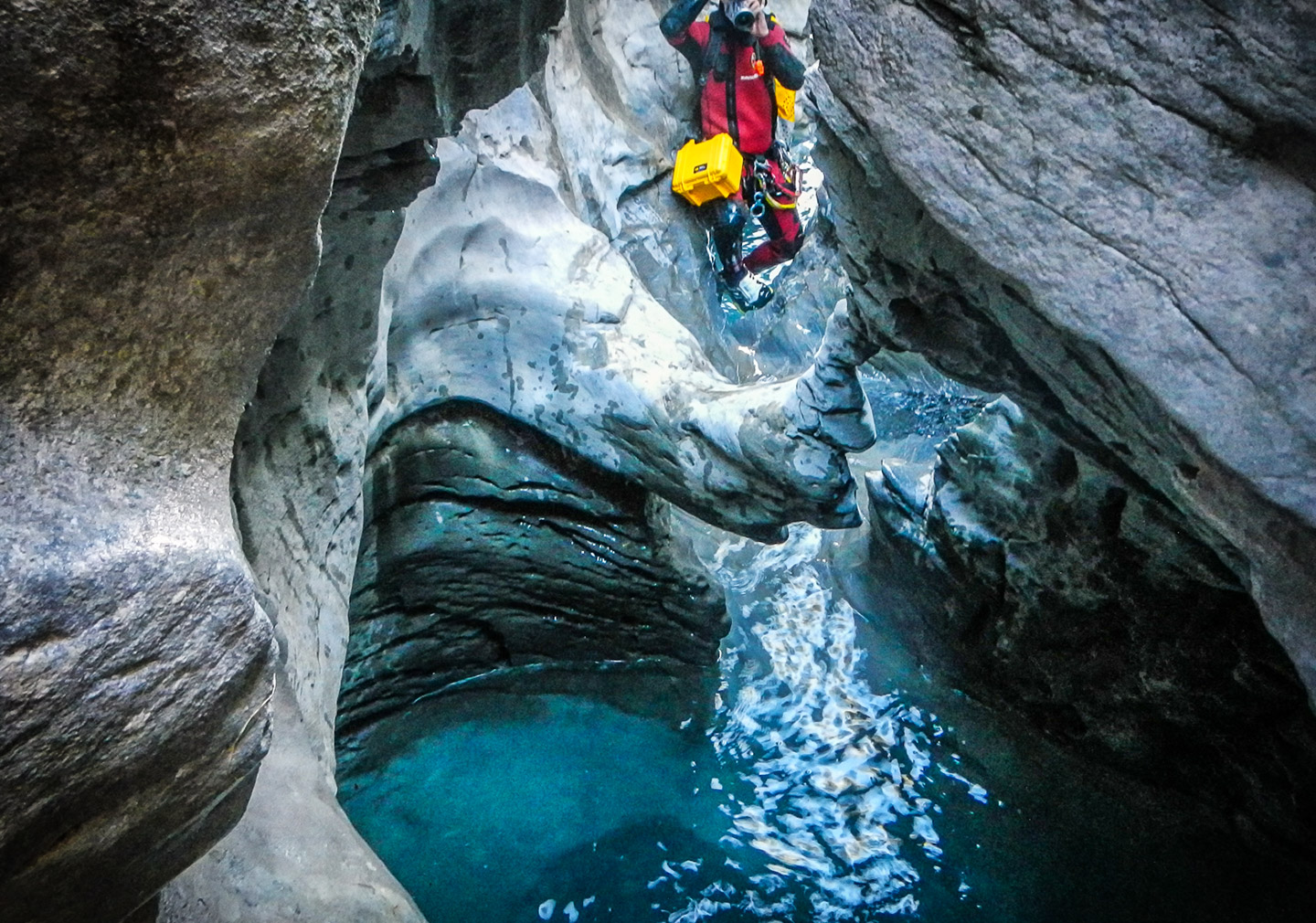
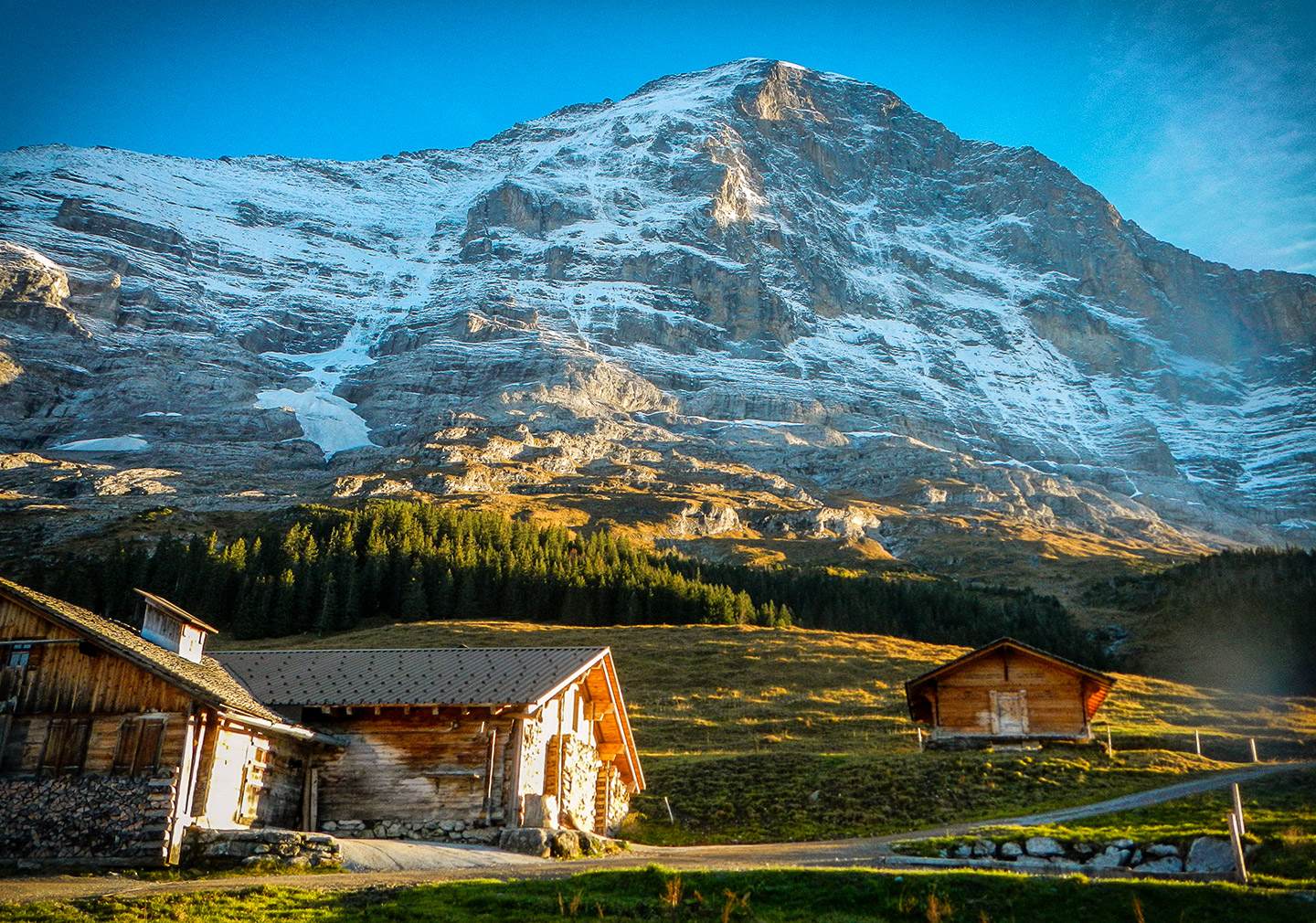
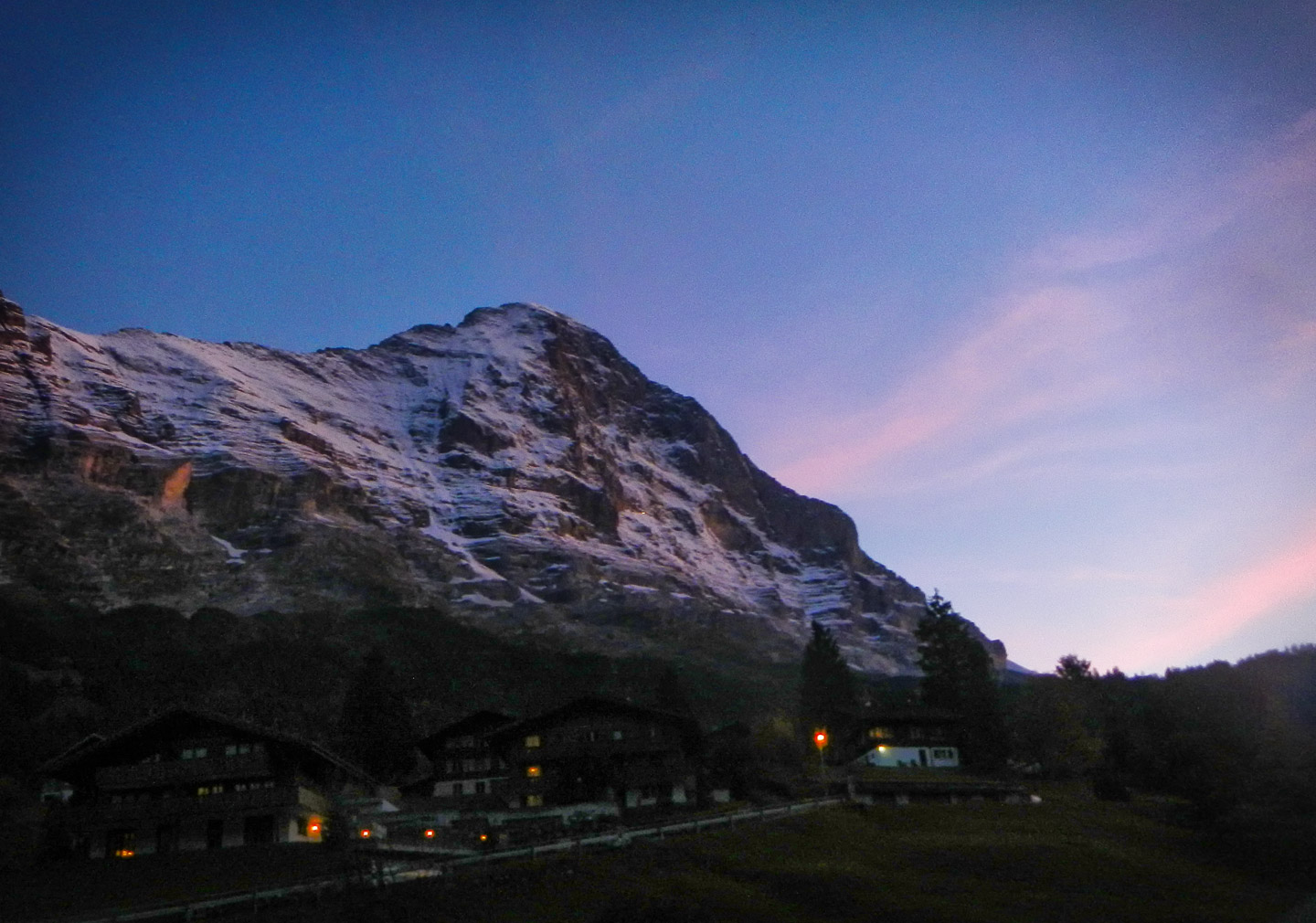
The biggest impression I got was at the 2 naturally-formed bridges. The first one, a bit smaller, proved, that nature is a very talented artist, which I had the pleasure of knowing more personally. As if the rhino supports the big rock at the other side of the canyon. How could such a formation happen? Water must have rotated sand in a constant swirl around it, which again slowly carved itself into the rock. And there at some point only the bridge stayed in the air and the water started to flow beneath. Such unimaginable luck that the rhino-bridge stayed intact after all this time and didn’t get crushed by any heavy rocks. Another curious thing is the waterfall called Geyser, which falls on a rock at an exact angle, that shoots the water back into the air. The Geyser is on an open part of the canyon, just 20m away of a trail, where travelers can view strange “frog-like creatures”, which are descending on ropes. And we really did have some eager viewers – a young family with 3 small children watched us with utmost curiosity, and we received a big applause, when we descended to the very bottom. In moments like these I really feel like a zoo animal, but the ego likes this sort of attention too.
Canyoning in the lower part of the canyon just flew right by. It goes much faster than in the upper part, so we could leave the canyon at 4 pm and took the last train to Grindelwald at 4.45 pm. We changed clothes at the car and make sure, that we “disinfected” our inner part as well :). After that, we made our way to the valley Kandertal, where we stayed overnight. When I was wrapping myself into a sleeping bag in the car at the evening, I was already thinking about the next day. The Gries canyon had at least 8-times too much water. Will it be the same with Gamchi canyon, which flows into the Gries and that is our next goal for tomorrow?
